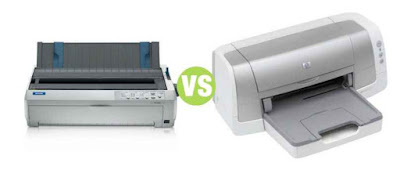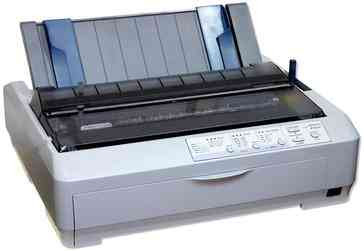Jump Clients
Access remote desktops, laptops, POS systems, kiosks and servers, even if no one is present to give you control. Jump Clients work regardless of network location.
Secure Remote Access, Regardless of Network Location
Jump Clients let you control remote computers even when you don’t control the remote network.
Just install a Jump Client on each system you need to access. You’ll be able to control it wherever it goes.
With Jump Clients support reps can access the remote systems without requiring the person on the other end of the session to be technical.
Secure Remote Access, Regardless of Network Location
(Jump Clients are a component of Bomgar’s patent-pending Jump Technology.)
Wistia video thumbnail - Feature: Jump Client Management
Jump Clients let you control remote computers even when you don’t control the remote network.
Just install a Jump Client on each system you need to access. You’ll be able to control it wherever it goes.
With Jump Clients support reps can access the remote systems without requiring the person on the other end of the session to be technical.
Multi-Platform Remote Access, Even from Android and iOS Devices
Control Remote Desktops and Servers from an iPad Securely control remote desktops and servers from an iPad
Jump Clients can be installed on Windows, Mac, or Linux computers, as well as Android phones and tablets. You can access them from any platform Bomgar supports.
So not only can the remote systems you're supporting be located anywhere, the support technicians can be, too.
Whether you’re offering support from a laptop, or from an Android or iOS device, you can stay productive while mobile.
Manage and Mass Deploy Jump Clients
Jump Clients can be mass deployed to Windows, Mac and Linux desktops or servers. To help with finding and identifying computers later, you can add a group name and comments when you deploy them.
You can create a default installer. Or you can use mass deployment scripts to pull in variables from other sources to modify the Jump Client parameters during installation.
Integrated Remote Access for Your Systems Management Platform
Jump Clients Enable Remote Access Jump Clients enable remote access regardless of network location
Support organizations can improve service levels, centralize support processes and strengthen compliance by integrating Bomgar with their systems management platform.
Once integrated, Bomgar enables technicians to offer proactive system support to all your Jump Clients directly from your systems management tool.
Bomgar can be launched from the ticket or system record. At the end of the session, Bomgar updates the ticket with details from each Bomgar remote support session, including links to session recordings, file transfer details, work notes, system information and post-session survey results.
Use Schedules to Limit Jump Client Access to Specific Times
There are two options to restrict access to Jump Clients. First, administrators can use time schedules to control periodic access to Jump Clients. Access schedules dictate the windows of time representatives are allowed to access certain Jump Clients.
You can also allow reps to deploy Jump Clients that automatically uninstall after a defined period of time.
Using Jump Client access schedules can protect your client from interruption and help your support organization conform to customers’ support needs . Both schedules and automatic expiration can help satisfy PCI compliance or prevent business users from being interrupted during peak hours.
Wake-On-LAN Support for Jump Clients in a Network
Wake-on-LAN (WOL) Support Wake-on-LAN (WOL) support lets you turn on remote computers
Support organizations can save on power costs by turning computers off after hours. With Bomgar, powering systems on/off can be handled remotely with Wake-on-LAN (WOL) support.
With wake-on-LAN support, you can broadcast Wake-on-LAN (WOL) packets through another Jump Client on the same network. Use of wake-on-LAN depends on user permissions and may not be supported in all environments.
Share Jump Clients Across Support Teams
For scenarios in which multiple groups need to access the same group of desktops, you can share a team’s Jump Clients across support teams and Embassies.
Your group policies determine how members of each team can interact with the remote computer.
Sharing Jump Clients allows you to give both internal reps and vendors access to the same system without complicating team structures.
Use Endpoints to Define How Sessions Begin
When you use Jump Clients to access servers and back end systems, you want to launch right into remote control. No one is present on the other end of a server for you to interrupt. But when you access remote desktops, you may want to display a prompt in case an end-user is present.
Support Session Policies let you define how a session begins based on the endpoint being supported.
With policies at the Jump Client level, you can choose to display a prompt if the remote desktop is one at which an end-user may be present. If the endpoint is a server, you can set the session policy up with no prompt.
Once Connected, Powerful Tools Are at Your Fingertips
When you connect to a remote desktop or server, Bomgar puts powerful tools at your disposal. Tools include:
Command shell
File Transfer
Multi-monitor support
Privacy screen
Reboot
Registry editor
Scripts
Special actions
System information
UAC elevation
Plus, you can control multiple systems simultaneously for maximum efficiency.
Report on Remote Access Sessions
Bomgar's logging and recording capabilities capture extensive detail about sessions performed through Jump Clients. These reports give administrators critical visibility into support activity.
Reports include IP information, system information, files transferred, chat transcripts, and many other details about the support session. Bomgar can even create video recordings of support sessions.
With Bomgar, you'll replace legacy remote access tools with a complete solution designed for the needs of security-conscious support organizations. Bomgar enables support representatives to access, diagnose, control and fix remote computers and mobile devices. Highlighted features are below.
Remote Control & Screen Sharing - the Core of Support
The core of remote support is seeing and controlling the remote computer. With Bomgar Remote Support, you can see your customer's screen and fully interact with the remote desktop.
Request remote control of multiple computers, view attached monitors, and use advanced screen sharing tools.
Remote Control and Screen Sharing
Customer Tech Support
Use chat support, screen sharing, CRM integration, and skills-based routing to increase support staff productivity. Bomgar Remote Support includes customizable surveys and support portals.
Use Bomgar for Customer Tech Support
Internal IT Support
Perform desktop support and server maintenance securely. Replace RDP, VNC, and other hard-to-audit remote control tools with a cross-platform support tool.
Use Bomgar for Internal IT Support
Help Desk Administration
Help Desk Integrations
Create queues, portals, teams, and policies to standardize technical support services. Manage technicians with integrated identity management and group policies.
Help Desk Administration
Monitor and Audit
Wistia video thumbnail - Demo: Monitor and Audit Remote Support Sessions
Monitor support activity in real time. Track customer satisfaction. Record every remote support session. And collect a detailed audit trail of each interaction.
Auditing Remote Support
Collaboration
Wistia video thumbnail - Demo: Collaborate during Remote Support Sessions
Share sessions between technicians, developers, or even outside vendors so that they can see the issue and troubleshoot together, helping support incidents get resolved faster.
Collaborative Remote Support
Embeddables
Wistia video thumbnail - Bomgar Button Demo
Embedding chat and remote support in your website, desktops, Windows programs, and mobile apps makes it easy for customers and employees to get help.
Embeddables for Remote Support



















